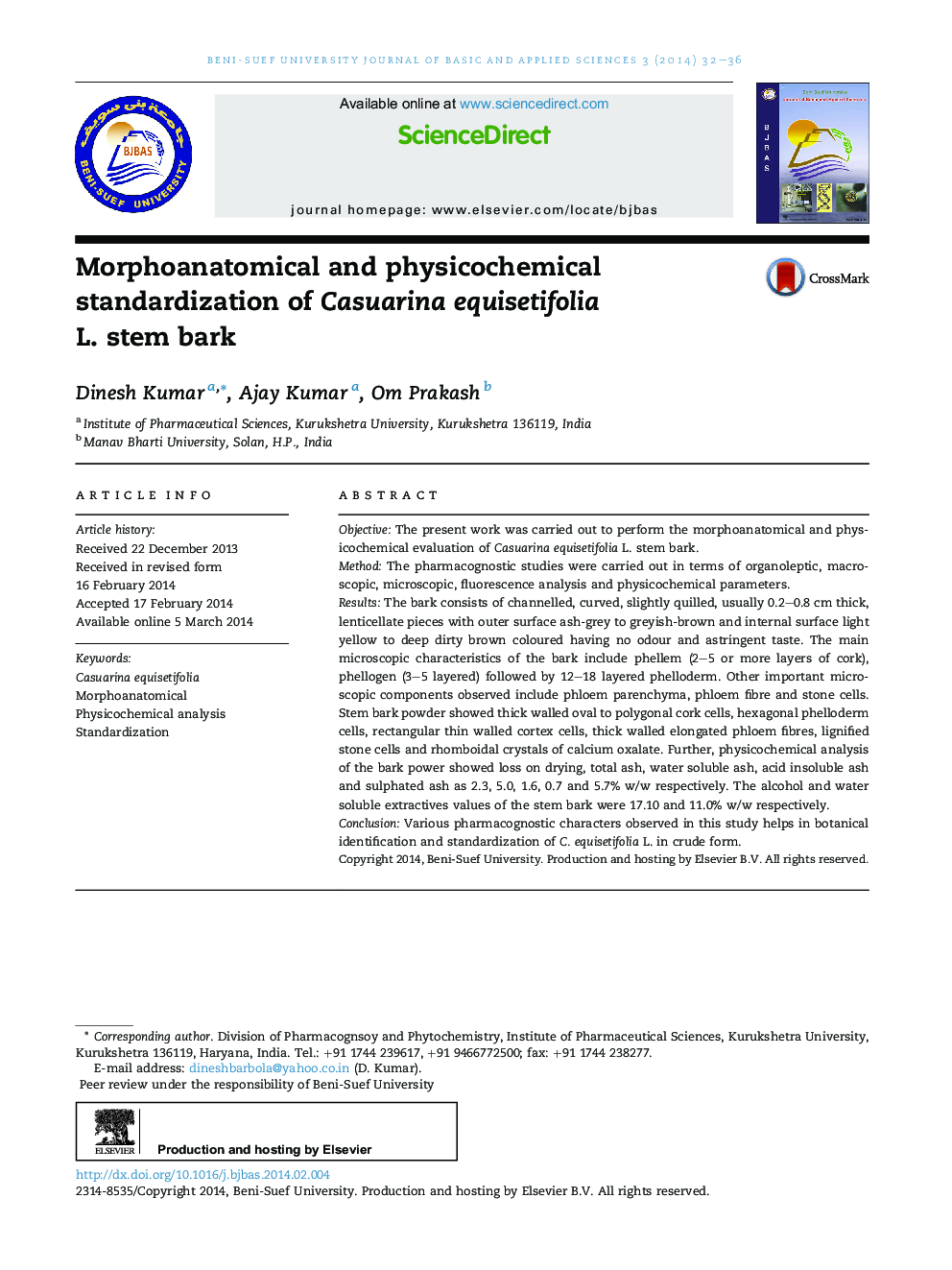| Article ID | Journal | Published Year | Pages | File Type |
|---|---|---|---|---|
| 816648 | Beni-Suef University Journal of Basic and Applied Sciences | 2014 | 5 Pages |
ObjectiveThe present work was carried out to perform the morphoanatomical and physicochemical evaluation of Casuarina equisetifolia L. stem bark.MethodThe pharmacognostic studies were carried out in terms of organoleptic, macroscopic, microscopic, fluorescence analysis and physicochemical parameters.ResultsThe bark consists of channelled, curved, slightly quilled, usually 0.2–0.8 cm thick, lenticellate pieces with outer surface ash-grey to greyish-brown and internal surface light yellow to deep dirty brown coloured having no odour and astringent taste. The main microscopic characteristics of the bark include phellem (2–5 or more layers of cork), phellogen (3–5 layered) followed by 12–18 layered phelloderm. Other important microscopic components observed include phloem parenchyma, phloem fibre and stone cells. Stem bark powder showed thick walled oval to polygonal cork cells, hexagonal phelloderm cells, rectangular thin walled cortex cells, thick walled elongated phloem fibres, lignified stone cells and rhomboidal crystals of calcium oxalate. Further, physicochemical analysis of the bark power showed loss on drying, total ash, water soluble ash, acid insoluble ash and sulphated ash as 2.3, 5.0, 1.6, 0.7 and 5.7% w/w respectively. The alcohol and water soluble extractives values of the stem bark were 17.10 and 11.0% w/w respectively.ConclusionVarious pharmacognostic characters observed in this study helps in botanical identification and standardization of C. equisetifolia L. in crude form.
